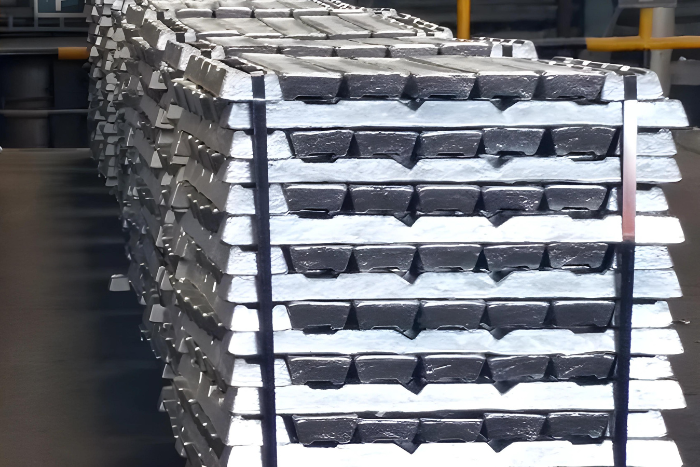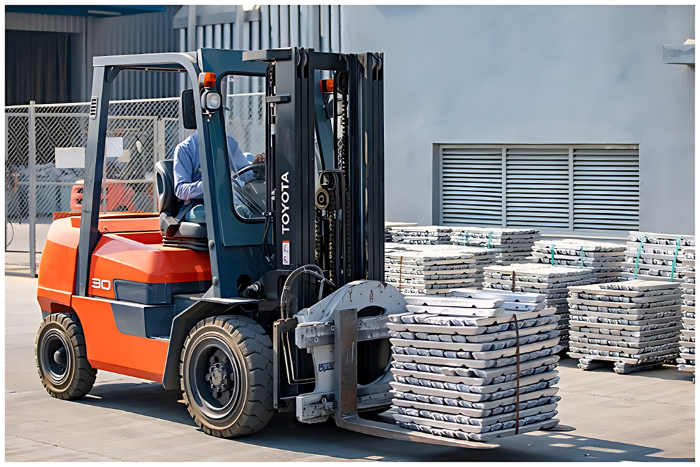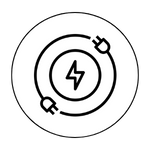Aluminium companies in India create aluminium ingots, a non-ferrous commodity with melted metal. The aluminium extrusion manufacturers in India use molds that are available in an array of sizes and forms, and the resulting ingots has a diversity of visual characteristics. After iron, aluminium is currently the second most used metal worldwide. Due to the metal’s extensive use in many different industries, the aluminium producers in India are taking extra care to mine this metal.
Aluminium alloys are metallic mixtures mostly consisting of aluminium and other metals like manganese, copper, zinc, magnesium, or zinc. Because these alloys are designed to improve particular qualities, they are more appropriate for a wider range of uses than aluminium in its purest form. Desired properties including enhanced machinability, resistance to corrosion, and strength are imparted by the inclusion of alloying elements. Because of its light weight, strength, and adaptability, aluminium alloys from the aluminium manufacturers in India are used extensively in a variety of industries, including consumer goods, automotive, aerospace, and construction.
Aluminium Alloy Overview


Aluminium Ingots Uses
Aluminium ingots are used in a wide range of industries. Among the most widespread uses of the adc6 aluminium alloy is in the manufacturing sector, where they are employed in the production of machinery, computers, automobiles, and other parts and components. Additionally, they can be utilized in the building sector to create doorways, siding, roofing materials, and window frames. The major aluminium producers in India also supplies these ingots for –
- Airframes and aircraft engines are constructed using Aluminium ingots in aerospace engineering.
- manufacturing of medical equipment, whereby prostheses are made.
- Cans are produced using them in packaging.
- crafts and art that can be formed into ornamental objects or sculptures. Aluminium products can be made from aluminium ingots.
- Products made of aluminium alloys can be produced using aluminium ingots.
- One application for aluminium ingots is as a conductive material.
- One uses aluminium ingots to create jewelry.
- One application for aluminium ingots is as decorative objects.
Why Choose Us?

0+ Years of experience

0+ Dedicated Staff

0+ Satisfied Customers
Aluminium Alloy
CMR Green, along with its joint ventures with Toyota Tsusho Corporation and Nikkei MC Aluminium, offers Indian customers a wide range of aluminium alloys manufactured to various standards.
Various alloys manufactured (amongst others) in CMR Green-
JIS Standard :
Chemical Composition of Aluminium Alloy ( Mass % )
| Alloy | Cu | Si | Mg | Zn | Fe | Mn | Cr | Ni | Sn | Pb | Ti | Al |
|---|---|---|---|---|---|---|---|---|---|---|---|---|
| ADC1 | 1.0 max. | 11.0 to 13.0 | 0.3 max. | 0.5 max. | 1.3 max. | 0.3 max. | 0.5 max. | 0.1 max. | 0.20 max. | 0.30 max. | Remainder | |
| ADC3 | 0.6 max. | 9.0 to 11.0 | 0.4 to 0.6 | 0.5 max. | 1.3 max. | 0.3 max. | 0.5 max. | 0.1 max. | 0.15 max. | 0.30 max. | Remainder | |
| ADC5 | 0.2 max. | 0.3 max. | 4.0 to 8.5 | 0.1 max. | 1.8 max. | 0.3 max. | 0.1 max. | 0.1 max. | 0.10 max. | 0.20 max. | Remainder | |
| ADC6 | 0.1 max. | 1.0 max. | 2.5 to 4.0 | 0.4 max. | 0.8 max. | 0.4 to 0.6 | 0.1 max. | 0.1 max. | 0.10 max. | 0.20 max. | Remainder | |
| ADC10 | 2.0 to 4.0 | 7.5 to 9.5 | 0.3 max. | 1.0 max. | 1.3 max. | 0.5 max. | 0.5 max. | 0.2 max. | 0.2 max. | 0.30 max. | Remainder | |
| ADC10Z | 2.0 to 4.0 | 7.5 to 9.5 | 0.3 max. | 3.0 max. | 1.3 max. | 0.5 max. | 0.5 max. | 0.2 max. | 0.2 max. | 0.30 max. | Remainder | |
| ADC12 | 1.5 to 3.5 | 9.6 to 12.0 | 0.3 max. | 1.0 max. | 1.3 max. | 0.5 max. | 0.5 max. | 0.2 max. | 0.2 max. | 0.30 max. | Remainder | |
| ADC12Z | 1.5 to 3.5 | 9.6 to 12.0 | 0.3 max. | 3.0 max. | 1.3 max. | 0.5 max. | 0.5 max. | 0.2 max. | 0.2 max. | 0.30 max. | Remainder | |
| ADC14 | 4.0 to 5.0 | 16.0 to 18.0 | 0.45 to 0.65 | 1.5 max. | 1.3 max. | 0.5 max. | 0.3 max. | 0.3 max. | 0.2 max. | 0.30 max. | Remainder | |
| Al Si9 | 0.10 max. | 8.0 to 11.0 | 0.10 max. | 0.15 max. | 0.65 max. | 0.50 max. | 0.05 max. | 0.05 max. | 0.05 max. | 0.15 max. | Remainder | |
| Al Si12(Fe) | 0.10 max. | 10.5 to 13.5 | 0.10 max. | 0.15 max. | 1.0 max. | 0.55 max. | 0.15 max. | Remainder | ||||
| Al Si10Mg(Fe) | 0.10 max. | 9.0 to 11.0 | 0.20 to 0.50 | 0.15 max. | 1.0 max. | 0.55 max. | 0.15 max. | 0.05 max. | 0.15 max. | 0.20 max. | Remainder | |
| Al Si8Cu3 | 2.0 to 3.5 | 7.5 to 9.5 | 0.05 to 0.55 | 1.2 max. | 0.8 max. | 0.15 to 0.65 | 0.35 max. | 0.15 max. | 0.25 max. | 0.25 max. | Remainder | |
| Al Si9Cu3(Fe) | 2.0 to 4.0 | 8.0 to 11.0 | 0.05 to 0.55 | 1.2 max. | 1.3 max. | 0.55 max. | 0.15 max. | 0.55 max. | 0.25 max. | 0.35 max. | 0.25 max. | Remainder |
| Al Si9Cu3(Fe)(Zn) | 2.0 to 4.0 | 8.0 to 11.0 | 0.05 to 0.55 | 3.0 max. | 1.3 max. | 0.55 max. | 0.15 max. | 0.55 max. | 0.25 max. | 0.35 max. | 0.25 max. | Remainder |
| Al Si11Cu2(Fe) | 1.5 to 2.5 | 10.0 to 12.0 | 0.30 max. | 1.7 max. | 1.1 max. | 0.55 max. | 0.15 max. | 0.45 max. | 0.25 max. | 0.25 max. | 0.25 max. | Remainder |
| Al Si11Cu3(Fe) | 1.5 to 3.5 | 9.6 to 12.0 | 0.35 max. | 1.7 max. | 1.3 max. | 0.60 max. | 0.45 max. | 0.25 max. | 0.25 max. | 0.25 max. | Remainder | |
| Al Si12Cu1(Fe) | 0.7 to 1.2 | 10.5 to 13.5 | 0.35 max. | 0.55 max. | 1.3 max. | 0.55 max. | 0.10 max. | 0.30 max. | 0.10 max. | 0.20 max. | 0.20 max. | Remainder |
| Al Si17Cu4Mg | 4.0 to 5.0 | 16.0 to 18.0 | 0.45 to 0.65 | 1.5 max. | 1.3 max. | 0.50 max. | 0.3 max. | 0.3 max. | Remainder | |||
| Al Mg9 | 0.10 max. | 2.5 max. | 8.0 to 10.5 | 0.25 max. | 1.0 max. | 0.55 max. | 0.10 max. | 0.10 max. | 0.10 max. | 0.20 max. | Remainder | |
| AC4B | 2.0 to 4.0 | 7.0 to 10.0 | 0.5 max. | 1.0 max. | 0.8 max. | 0.50 max. | 0.20 max. | 0.35 max. | 0.10 max. | 0.20 max. | 0.20 max. | Remainder |
| AC2B | 2.0 to 4.0 | 5.0 to 7.0 | 0.5 max. | 1.0 max. | 0.8 max. | 0.50 max. | 0.20 max. | 0.35 max. | 0.10 max. | 0.20 max. | 0.20 max. | Remainder |
| AlSi10Mg | 0.08 max. | 9.0 to 11.0 | 0.25 to 0.45 | 0.10 max. | 0.45 max. | 0.45 max. | 0.05 max. | 0.05 max. | 0.05 max. | 0.15 max. | Remainder | |
| Al Si9Cu1Mg | 0.8 to 1.3 | 8.3 to 9.7 | 0.30 to 0.65 | 0.8 max. | 0.7 max. | 0.15 to 0.55 | 0.20 max. | 0.10 max. | 0.10 max. | 0.10 to 0.18 | Remainder |
BS Standard :
Chemical Composition of Aluminium Alloy ( Mass % )
| Alloy | Cu | Si | Mg | Zn | Fe | Mn | Cr | Ni | Sn | Pb | Ti | Al |
|---|---|---|---|---|---|---|---|---|---|---|---|---|
| LM6 | 0.1 max. | 10.0 - 13.0 | 0.1 max. | 0.1 max. | 0.6 max. | 0.5 max. | 0.1 max. | 0.05 max. | 0.1 max. | 0.2 max. | Remainder | |
| LM10 | 0.1 max. | 0.25 max. | 9.50 - 11.0 | 0.1 max. | 0.35 max. | 0.1 max. | 0.1 max. | 0.05 max. | 0.05 max. | 0.2 max. | Remainder | |
| LM4 | 2.0 - 4.0 | 4.0 - 6.0 | 0.2 max. | 0.5 max. | 1.0 max. | 0.2 - 0.6 | 0.3 max. | 0.1 max. | 0.1 max. | 0.2 max. | Remainder | |
| LM24 | 3.0 - 4.0 | 7.5 - 9.5 | 0.3 max. | 3.0 max. | 1.3 max. | 0.5 max. | 0.5 max. | 0.2 max. | 0.3 max. | 0.2 max. | Remainder | |
| LM26 | 2.0 - 4.0 | 8.5 - 10.5 | 0.5 - 1.5 | 1.0 max. | 1.2 max. | 0.5 max. | 1.0 max. | 0.1 max. | 0.1 max. | 0.2 max. | Remainder | |
| LM13 | 0.7 - 1.5 | 10.5 - 13.0 | 0.8 - 1.5 | 0.5 max. | 1.0 max. | 0.5 max. | 1.5 max. | 0.1 max. | 0.1 max. | 0.2 max. | Remainder |
Scrap your expenses, not your goals and we will be happy to assist you further.
Types of aluminium ingots
One of the most popular uses of the metal is by the aluminium ingot manufacturers.
Primary Ingots of Aluminium
The basic variety of aluminium ingots is made from bauxite ore. These are premium ingots with low impurities like iron, silicon, and copper that are at least 99% pure Aluminium For applications with pure aluminium chemical composition, the primary ingots are perfect such as in producing wires, cables, and transformers.
Secondary Ingots of Aluminium
Secondary aluminium ingots made from recycled aluminium scrap from aluminium ingot suppliers typically contain various impurities, including as silicon, magnesium, and copper, and are around 95–98% pure aluminium. Secondary aluminium ingots are perfect for manufacturing engine blocks and pistons in a variety of industries, including the automotive sector.
Cast Aluminium Ingots
Cast aluminium ingots are the third variety of aluminium ingots made by casting. Melted aluminium is poured into a mold and cooled to finalize the process. The form, size, and weight of cast aluminium ingots vary depending on the intended use. Aluminium manufacturing company commonly use them in the building sector to make panels, doors, and window frames.
Alloy Aluminium Ingots
Last but not least, alloy aluminium ingots mix aluminium with one or more other elements to produce unique qualities including strength, heat resistance, and corrosion resistance. When creating alloy aluminium ingots, copper, magnesium, silicon, and zinc are a few frequent alloying components used. For the production of parts like airplane bodies, alloy aluminium ingots are perfect for the aerospace and aviation sectors.
Applications of aluminium ingots
- Aerospace: adc12 aluminium ingot are lightweight and important for aircraft components.
- Automotive: Used in engine blocks, transmission parts, and structural elements for fuel efficiency.
- Construction: Corrosion-resistant ingots for doors, windows, and structures.
- Electrical: High-conductivity ingots for cables and wiring.
- Packaging: Aluminium ingots produce lightweight, recyclable foil and containers.
- Military: Largest Aluminium manufacturers use Aluminium ingots crucial for defense equipment like bullet casings.
- Consumer Goods: used in cookware, appliances, and electronics.
- Renewable Energy: Key in solar panels and wind turbine components.

Industries We Serve
We serve a wide range of industries, including aerospace, automotive, construction, chemical, electrical, marine, oil, and petroleum. our aluminium ingots are the preferred choice for businesses that value quality, reliability, and innovation.

Aerospace

Automotive

Chemical

Construction

Electrical

Marine

Oil

Petroleum
Testimonials
Our Customers
Our lineup of customers reads like a who’s who of the automotive and engineering industries of India. We can proudly claim among our clients the leading lights of India like Maruti Suzuki, Honda Car, Toyota, Hyundai, Hero Moto Corp, Honda Motorcycle and Scooter, Yamaha, Bajaj, Royal Enfield, Sunbeam, Rockman, Ahresty, and many others. If we have managed to get their business and if we have sustained it, we can say that such demanding clients are more than fully satisfied with all aspects of our services. We are here to serve, innovate, and help clients prosper.

Frequently Asked Questions
What is aluminium ingot made of?
Aluminium ingots are typically made of primary aluminium derived from bauxite ore through a smelting process, with purity levels often exceeding 99%.
What is the melting point of aluminium ingot?
The melting point of aluminium ingot is approximately 660.3 degrees Celsius (1220.54 degrees Fahrenheit).
What is the best aluminium extrusion?
The best aluminium extrusion depends on specific application needs. Alloys like 6061 and 6063 are commonly considered for their balanced strength, machinability, and corrosion resistance.
What is the chemical composition of LM4 Aluminium alloy?
LM4 is primarily composed of aluminium , with alloying elements like silicon, copper, and small amounts of magnesium, offering good castability and strength.
What is the difference between ADC12 & ADC6?
ADC12 and ADC6 are aluminium alloys, with ADC12 containing higher levels of silicon and offering superior fluidity in casting compared to the ADC6 alloy.
What is the difference between LM6 and LM24?
LM6 and LM24 are aluminium casting alloys, with LM6 having higher silicon content, providing improved castability, while LM24 has additional elements like copper and nickel for enhanced strength and heat resistance.



